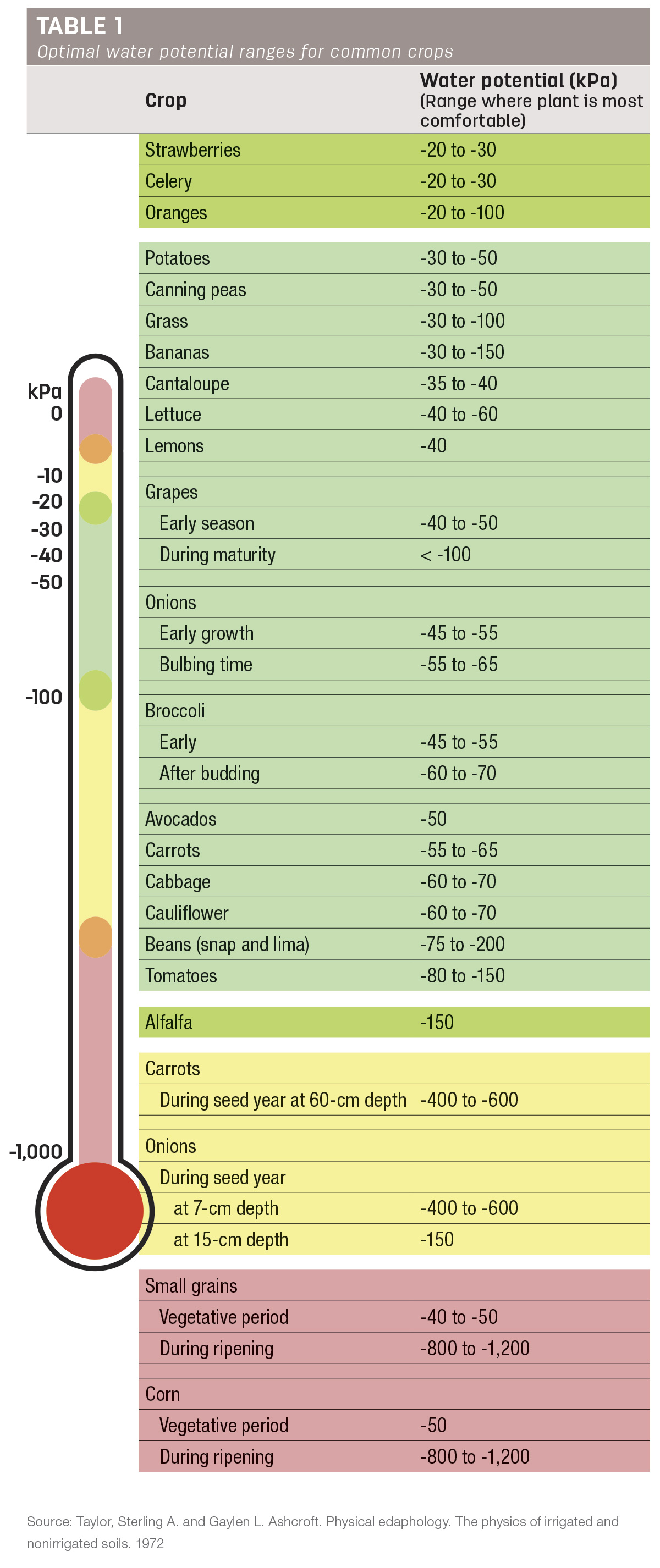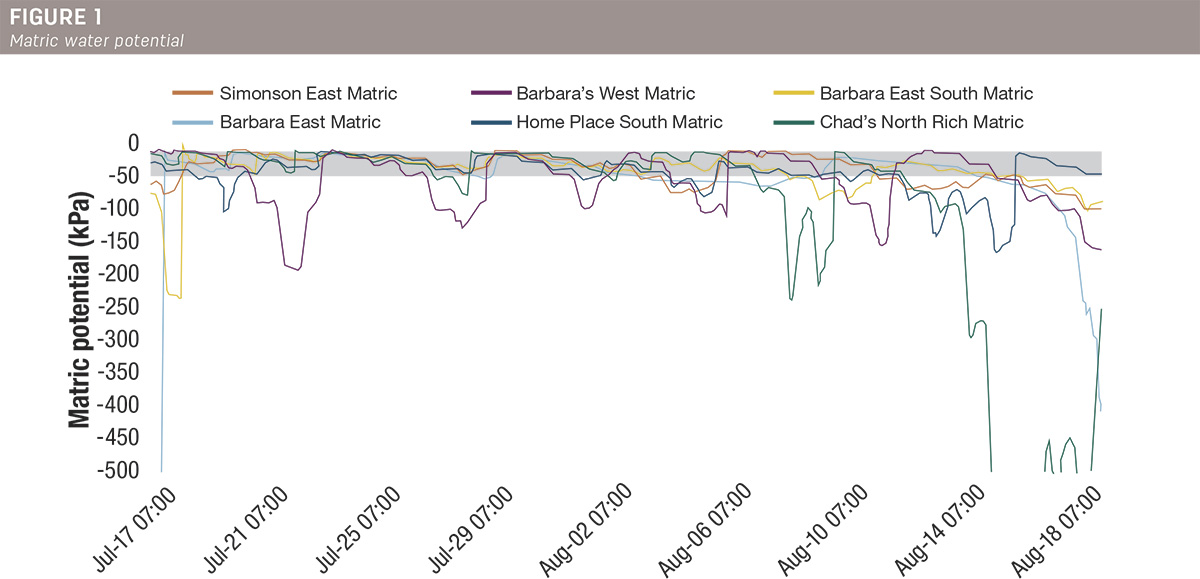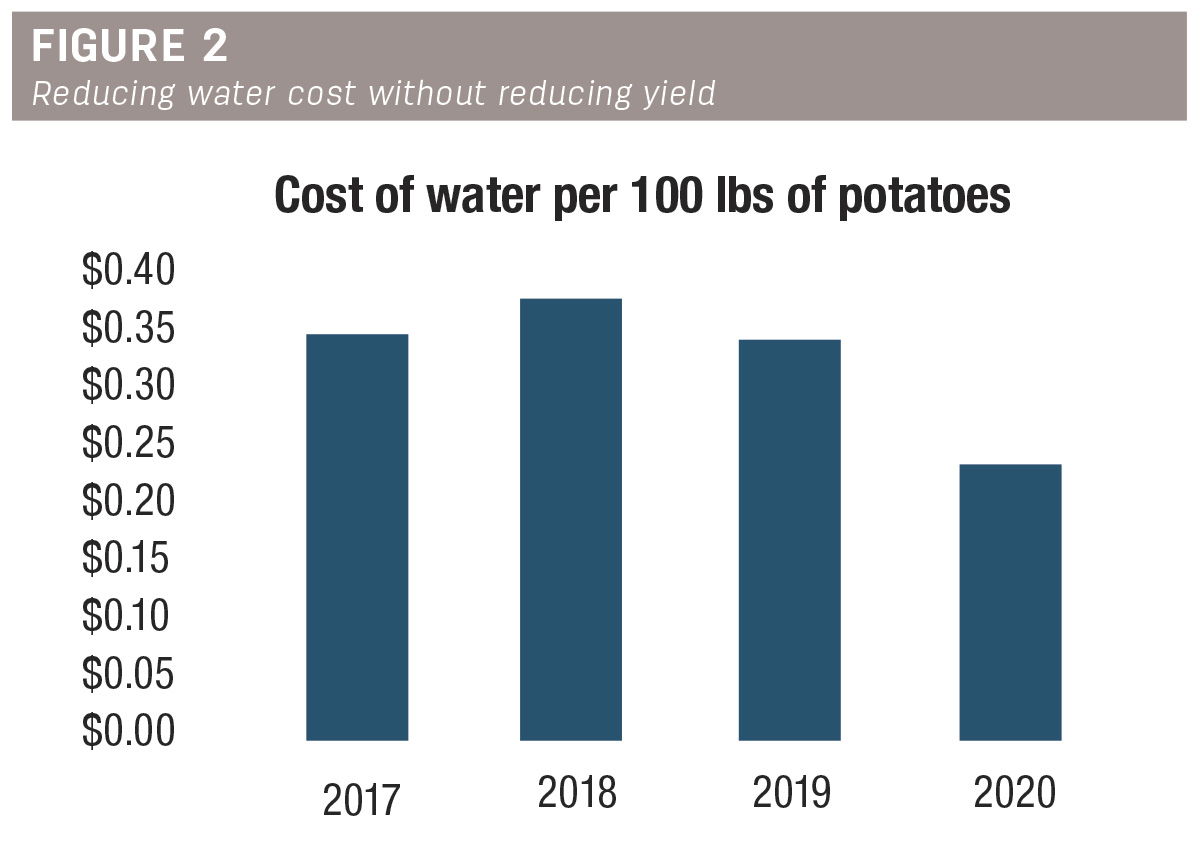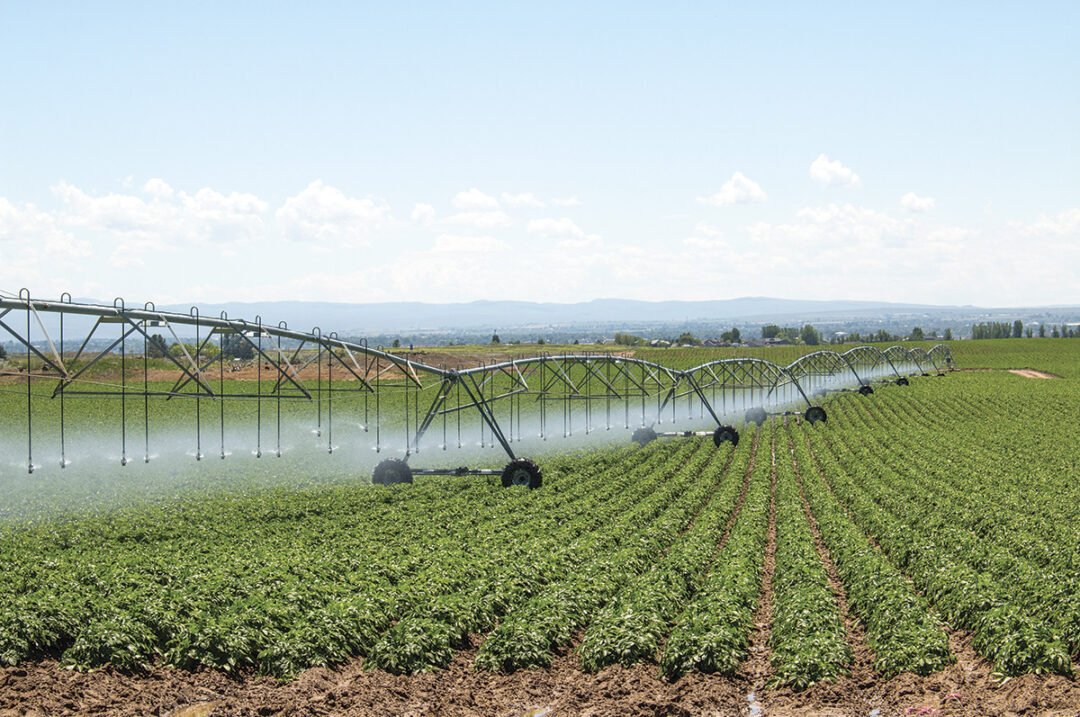Every farmer knows the cost of irrigating their crops, and anyone who has lost yield to disease and drought knows the cost of over- and underirrigating their crops. The challenge is knowing how much water to add and whether plants are really at their optimal water comfort level. We can use water content sensors to see how wet the soil is, but that does not tell us whether there is enough – or too much – water for our plants.
Water potential sensors tell the rest of the story about soil moisture. They tell you how available that moisture is for plant uptake, which leads to better irrigation management.
Soil moisture and water potential
We all understand soil moisture. It’s intuitive. We can feel moisture in soil the same way we feel heat from a fire. We also approach soil moisture and irrigation like building a fire to keep the air temperature near our personal comfort zone. When it’s too cold, we add more fuel. When it’s too hot, we let the fire die down. Often, when people manage irrigation water, they take a similar approach. They dig down with a shovel and feel the soil – if it feels dry, they add water, if it feels too wet, they withhold water until it dries out.
Like people with temperatures, plants have a comfort zone for soil moisture. Also, like people, not all plants have the same comfort zone. Crops such as potatoes are generally more comfortable in wetter soils than crops like alfalfa or wheat. This is where the challenge of irrigation management comes in. Sure, you added water to the soil, but was that enough for your crop, and how would you know?
To go back to the fire example, we are all familiar with the thermostat, a simple device that compares the air temperature to a temperature we set that tells a furnace to add more fuel when it gets too cold. The furnace adds heat to our home, and it knows to stop when the thermostat says that the air has absorbed enough heat to bring the temperature up to our comfort zone.
A water potential sensor is like a thermometer for soil moisture. It tells us how available the soil moisture is for plant uptake, and it’s up to us to use that data to add water until the soil moisture level reaches the comfort zone of the plant (Table 1). Even though the definition of water potential is complex, using this measurement can be as simple as using a thermostat. In fact, crop comfort zone ranges are well established, so there isn’t a need to deeply understand the energy state of water in soil to get the benefits of a measurement.

Better irrigation management
Knowing your soil’s water potential and your crop’s comfort zone is like knowing the temperature in your home and what temperature your family will be comfortable at. We can waste a lot of fuel by heating our home until people feel a need to open the windows to bring the temperature back down. We can also waste a lot of water – and, with it, fertilizers and soil nutrients – by irrigating until the soil is obviously too wet and needs to drain and dry out.
We worked with an Idaho potato grower a few years ago to install water potential sensors alongside the soil moisture sensors he had experience with. Using the data from both sets of sensors, he could tell when his soil was especially wet or dry and how much moisture his potatoes needed to reach their comfort zone, which cut back on the guesswork that leads to overirrigation. Between 2017 and 2020, he cut his water use by more than a third and increased his annual yield. Even better, his crops have improved in quality, with rot virtually disappearing in that time.
The trick is knowing where the crops are comfortable and their ability to draw water from the soil they’re in. The graph in Figure 1 shows water potential measurements at several sites in the aforementioned grower’s fields over a one-month period after he had used water potential measurements for a few years. The dark green bar is the comfort zone for potatoes. We can see minimal overirrigation and about three weeks where the crops were in their comfort zone.

Better management led to a significant reduction in his cost of water. You can see in Figure 2 that his cost of water per hundredweight of potatoes dropped significantly from 2017 to 2020, and it ended up saving him over $13,000 in one year.

That savings combined with an 8% increase in yield is a significant amount of money back in his pocket.
Comfort zones, plant health and yields
Keeping plants within their optimal zone results in healthier plants, which means higher quality and yield. With today’s challenging freshwater situation, water potential sensors are powerful tools to help with conservation without reducing yields. We can provide our crops the water they need without overirrigating and washing fertilizers and nutrients below the root zone, thus increasing quality, yield and money in your pocket.







